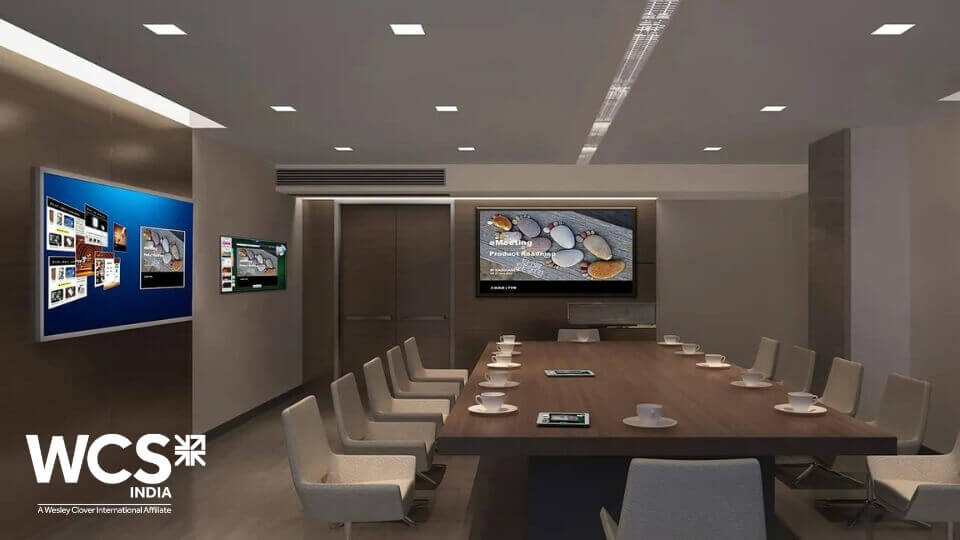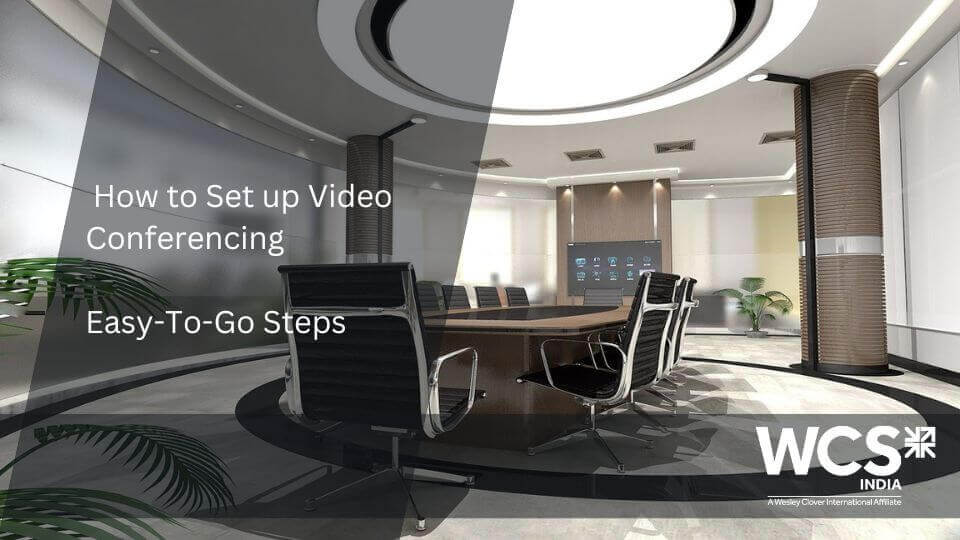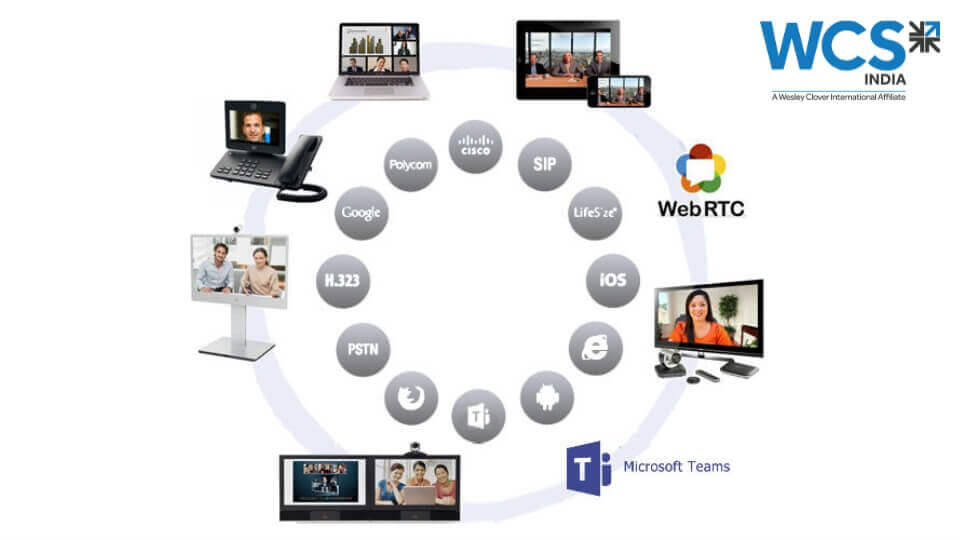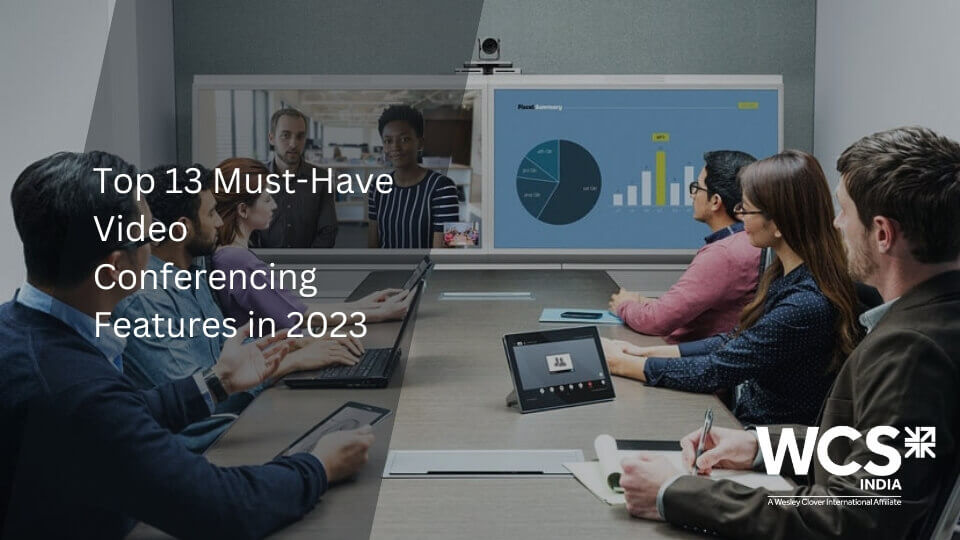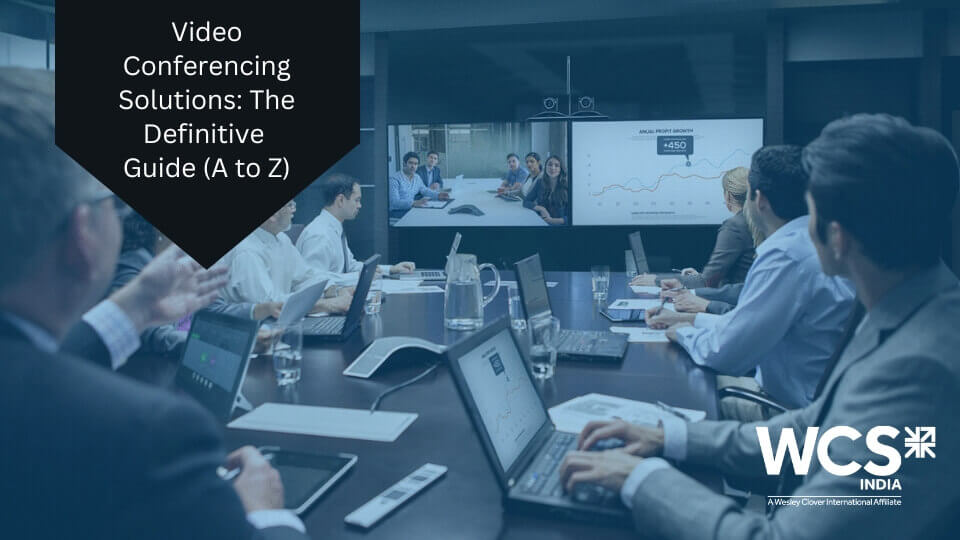Video Conference Room Design and Layout Guidelines
Who doesn’t dream of making new inroads into the business world? Well! To turn that dream to reality, there is a need to forge a prolonged client-employee relationship which could be done by enhancing the mode of communication and collaboration. When we talk about video collaboration, there is no one-for-all video conferencing system that suits for all organizations. It is vital to select optimal video solution that fits best with your goals and needs. If you want to know what more is flowing in the latest VC solutions era, then don't skip Video Conferencing Solutions: The Definitive Guide. Get ready to extract a myriad of VC solutions ingredients!
This blog has been written to take into consideration some of the key points to ensure an ideal environment for video conferencing.
What Room Requirements You may Need?
Here are some of the general room requirements that must be taken into consideration :
-
- Talking about the ceiling tiles, there should be high-quality acoustic tiles about 1” thick compressed dense core fiberglass.
-
- Blowers, heat exchangers, solenoid valves and other air handling equipments must be kept outside the conferencing room, to avoid unnecessary noise disruptions.
-
- Moreover, open, untreated windows may cater to unnecessary distractions of noises and light, which may interrupt in the conferencing. Thus, it is important to put heavy weight drapes of about 24 ounces for a seamless video call.
Points to Consider in case of Interior Designing and Finishes:
-
- There are certain colors which are considered best for a quality room video conferencing.
-
- If video conferencing is held in the room with marginal lighting, in that case, you must wear slightly dark-colored clothes and a slighter darker color on the walls would help to serve the purpose.
-
- Generally, it is envisaged that light gray color with a touch blue seems to make a favorable combination.
-
- In case when there is a slight difference between the room background and the reference image color, the codec easily turns the images into numbers with the result that the person at the far end will be able to experience video conferencing of much higher quality.
-
- Keeping in mind some of these color recommendations, acoustic panels must be ordered in light colors such as silver gray, quartz or champagne within the camera field of view.
-
- The software at the video conferencing creates the image at the far end from a blue.gray reference image.
Points to Consider While Selecting Furniture:
-
- Tables or any sort of furniture present in the room must have a light, top surface while glossy top surfaces must be avoided at all costs in order to avoid any ill visible effects.
-
- Flat satin finish in neutral gray is considered to be the best table surface color.
-
- The camera system must be focused a bit far away from the doorways in order to avoid all sorts of distractions and movement of people.
-
- The furniture must be placed in accordance with the video conferencing system and it must not interrupt in the interaction of the conference participants.
-
- You may also use a table covering of appropriate color in case the worst possible table surfaces.
Free Download: Discover how you can communicate face-to-face with our super-convenient video solutions.
Optimal Acoustics:
-
- Primarily, the video conferencing room should be built in order to achieve a low noise rating. This is because a quieter room would make it easier to hear each other’s voices clearly and to the other participants in the far-end location.
-
- It is important to cover about 50 percent of the walls with acoustic panels to prevent the voice of the meeting room to leak into the adjoining hallways or offices.
-
- Every conference room of medium to large size must be given acoustic treatment for a quality speech-rendering to other conference sites.
-
- It is important to take note of the fact that the treated surface must include about two non-parallel walls. Moreover, the treated wall must have a wall immediately behind the video system since its hardware causes constant disturbances of fan noises.
Room Lightning:
It is necessary to keep a check on the brightness of lightning in the video-conferencing room, in order to determine the far-end view of the meeting.
-
- In case of low to moderate lightening (20fc to 35 fc, where fc refers to footcandles), the range of in-focus objects is about 2’ or 3’ from nearest in-focus to furthest in-focus.
-
- On the case of bright light(70fc or more) in the video conferencing room, the distance range of the objects in-focus, doubles, which implies that the people at the far-end will be able to see more people in-focus and have a clearer view.
- Use indirect lighting for 80-85% of the light which helps in minimizing shadows on the face of participants, and evenly distributed direct lighting for the remaining 15-20%. The direct light creates backlight separation between foreground and background objects or surfaces.
- As viewed by camera, there should be not less than 55fc and ideally as much as 75fc of light (770lux) on the faces of the participants in the facial field.
Video Elements:
It should be taken into consideration that the size of display used in video conferencing environment depends on the number of attendees, the physical distances between the participants and also on the type of material presented on screen.
Following the above-mentioned guidelines would certainly help in dramatically enhancing the experience of the bi-directional conference and human interactions. With an ideal environment ready, prepare yourself to have a noteworthy video-conferencing experience.
